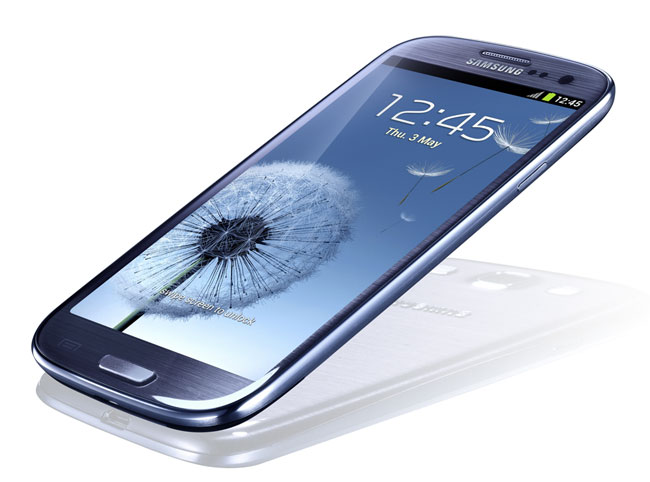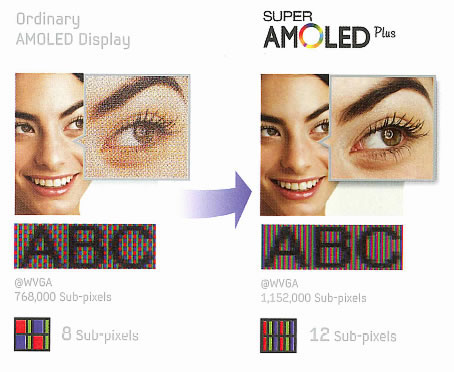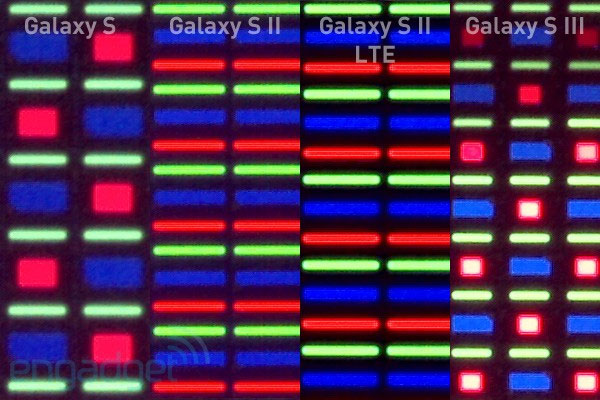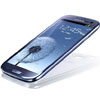Samsung unveiled their new Galaxy SIII yesterday with capable specifications but one thing stood out as odd and has since gained traction in discussions forums; the PenTile-based 4.8” AMOLED screen. Samsung has returned to PenTile pixels even though they criticized the technology after the launch of the SII. But what is it all about?
Galaxy SIII with Pentile AMOLED
Samsung once again returns to the PenTile based AMOLED screens with their latest smartphone, Galaxy SIII, to keep up in the pixel race. The first Galaxy S smartphone also used PenTile pixels but with Galaxy SII, Samsung introduced a true RGB AMOLED Plus screen and even publicly dissed the PenTile matrix.

Samsung has unveiled their new Galaxy SIII with a 4.8-inch HD Super AMOLED screen with PenTile pixel matrix
Now Samsung has once again returned to PenTile and judging by discussions after the launch on major tech sites, it is not a particularly welcomed move. The incentive is keep up in the pixel race and PenTile OLED panels can allow Samsung to reach higher resolutions than RGB OLED panels – at least right now. But PenTile is also a shady way of increasing resolution at the expense of other factors.

When launching the Galaxy SII, Samsung publicly dissed PenTile screens
We addressed the PenTile vs. RGB subject in an earlier article that caused a lot of debate but the arguments are still true. The PenTile technology in the new Galaxy SIII is the so-called RGBG (red, green, blue, green); a method where some subpixels are “shared” in the larger pixels, meaning that the display only uses two-third subpixels when compared to a “real” RGB display panel.

Samsung used PenTile in the Galaxy S and moved to RGB in SII. PenTile now returns with SIII, picture source: Engadget.com
The disadvantages of PenTile are widely recognized to be fuzzy text on some color combinations (most noticeably saturated red) and color fringing on high contrast edges on the screen. For the most part it is not visible but it is one of those cases of “when you see it, it is hard to disregard”. PenTile panels also tend to skew colors when viewed from an angle.
The disadvantages become less prominent when the resolution moves up and with its 1280x720 pixel resolution (for more on pixel resolution controversy see our Nexus article), Samsung should have ironed out the most visible effects but the argument remains. Samsung agreed when they launched the Galaxy SII but it seems that they have reversed their stance on the matter without any technical breakthroughs, which surely seems contradicting. In the end we guess it all comes down to marketing instead of integrity. We had hoped to see a Super AMOLED “Plus” screen with RGB in Galaxy SIII but unfortunately it failed to materialize this year.
- Further reading: Engadget
 Samsung unveils Galaxy SIII with PenTile AMOLED">
Samsung unveils Galaxy SIII with PenTile AMOLED">
